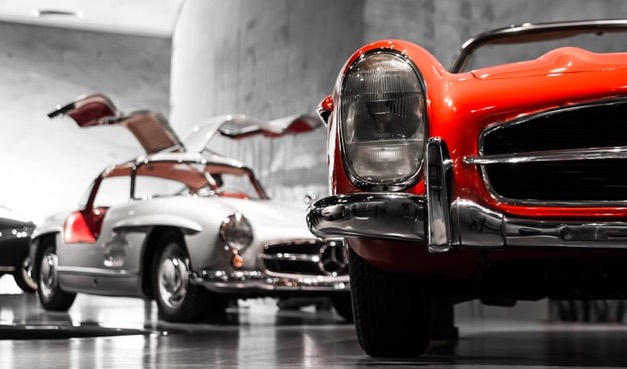Classic Car Classifieds > Bristol 400
First Series | Production: 1946 - 1947
The First Series of this type has a top hung smooth boot lid, the spare wheel being contained within the Boot. The bumpers were chromed tubular steel and shaped to follow the body contours. There were curved overriders front and rear.
The prototype Type 400 saloon, chassis number 1, was built in 1946. Note the original tubular bumper bar style. It also has additional air vent flaps in the bonnet lids which were not provided on the production models.
This model is built on a timber frame mounted upon a massive steel box section open 'A' frame chassis. Unlike all of the later factory built Bristols, the body main hull is steel, as are the front and the rear wings, but the door skins, bonnet and boot lid are aluminium, as are the spare wheel cover and bumper aprons on the second series model.
Second Series | Production: 1948 - 1950
Second series Type 400 saloon built in 1948. First series cars had smaller headlamp units, as can be seen from the picture of the prototype above. This car has modern trafficators fitted below the front bumpers to improve upon the original semaphore or flipper type units retained mounted behind the doors.
Interior of the Type 400 saloon was nearly always brown and beige leather and wool cloth, or all leather with a wool cloth headlining. Note the neo 'art deco' treatment to the trim. Sculpted door frames allow greater shoulder/elbow room than the pre-war BMW from which it was derived, and the handy door pockets. The button type attachments are not door pulls but ashtrays; these are also fitted into both armrests of the rear seat. The door windows on this type are sliding, not wind-down.
Rear view of Type 400 saloon, showing the aluminium cover to the spare wheel mounted on top of the boot lid. Export cars often were fitted with top hung opening rear windows glazed in perspex. These were also available to specification on the home market. The example pictured has a flush glazed fixed rear window. Rear lamp lens glasses were originally sand-blasted internally to present a white light because the composite lamps also house the reversing lights, which operate only when the sidelights are in operation. On this car the lenses have been changed to red, to improve effectiveness in modern traffic, along with discrete flashing trafficator lamps mounted below the bumper to supplement the semaphore or flipper type units mounted behind the doors. On the original lamps, in order to display a red side/stop light, the side/stop bulbs themselves were fitted with a rather ineffective red coloured glass cover.
Classifieds Search
Sell Your Car for FREE

Place your car for sale in our classic classifieds section. It's completely FREE to place an advert with CCI.
No classified adverts listed, try again later.
Click on the website logos below to search for models matching your search criteria for sale at each website:
Classified Analysis
There are currently no classified advert analysis reports listed.
Classifieds Search
Classified Alerts
We can help you find the classic vehicle you desire.
Advertise Here
You can advertise your business here. Call us on
01892 457670
